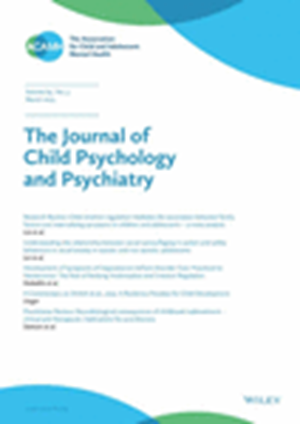Multilevel risk and protective factors for self-harm, suicidal ideation and suicide attempt in adolescents.
IF 7
1区 医学
Q1 PSYCHIATRY
引用次数: 0
Abstract
BACKGROUND Better characterising risk and protective factors for suicidal distress and self-harm in adolescents may facilitate better targeting of interventions that address underlying vulnerabilities. However, few previous longitudinal studies have: (1) sufficient power to identify key risk and protective factors, (2) limited representativeness to the community and (3) accounted for multilevel factors (individual, family, community). This study aimed to assess prevalence and identify risk and protective factors for self-harm, suicidal ideation and suicide attempts in a large cohort of Australian adolescents. METHODS Data from 4,122 adolescents from 134 Australian schools were collected as part of the Future Proofing Study, a prospective cohort study of adolescent mental health and wellbeing. Generalised linear mixed models were used to assess the effect of baseline mental health, lifestyle, social and school-level factors on self-harm, suicidal ideation and suicide attempt at 12-month follow-up. RESULTS At 12-month follow-up, 17.7% of adolescents reported self-harming behaviour, 18.6% reported suicidal ideation and 3.0% reported a suicide attempt. In addition to mental health history, female and gender-diverse identities, LGBTQA+ identity and greater levels of prosocial behaviour were significantly associated with self-harm and suicidal ideation. Peer problems were associated with suicidal ideation and suicide attempt. CONCLUSIONS Rates of suicidal distress and self-harm remain high in Australian adolescents. Reducing symptoms of depression, improving peer relationships, mitigating online bullying and providing social support for families may be suitable targets for future prevention and early intervention programs.青少年自我伤害、自杀意念和自杀企图的多重风险和保护因素。
背景更好地描述青少年自杀困扰和自残的风险和保护因素可能有助于更好地针对潜在脆弱性进行干预。然而,以往的纵向研究很少有:(1)足够的力量来识别关键的风险和保护因素;(2)对社区的代表性有限;(3)考虑了多层次因素(个人、家庭、社区)。本研究旨在评估澳大利亚一大群青少年中自残、自杀意念和自杀企图的患病率,并确定风险和保护因素。方法来自澳大利亚134所学校的4122名青少年的数据收集作为未来证明研究的一部分,这是一项关于青少年心理健康和幸福的前瞻性队列研究。在12个月的随访中,采用广义线性混合模型评估基线心理健康、生活方式、社会和学校层面因素对自残、自杀意念和自杀企图的影响。结果在12个月的随访中,17.7%的青少年报告有自残行为,18.6%报告有自杀意念,3.0%报告有自杀企图。除了心理健康史外,女性和性别多样性身份、LGBTQA+身份和更高水平的亲社会行为与自残和自杀意念显著相关。同伴问题与自杀意念和自杀企图有关。结论澳大利亚青少年的自杀困扰和自残率仍然很高。减轻抑郁症状、改善同伴关系、减轻网络欺凌和为家庭提供社会支持可能是未来预防和早期干预方案的合适目标。
本文章由计算机程序翻译,如有差异,请以英文原文为准。
求助全文
约1分钟内获得全文
求助全文
来源期刊
CiteScore
13.80
自引率
5.30%
发文量
169
审稿时长
1 months
期刊介绍:
The Journal of Child Psychology and Psychiatry (JCPP) is a highly regarded international publication that focuses on the fields of child and adolescent psychology and psychiatry. It is recognized for publishing top-tier, clinically relevant research across various disciplines related to these areas. JCPP has a broad global readership and covers a diverse range of topics, including:
Epidemiology: Studies on the prevalence and distribution of mental health issues in children and adolescents.
Diagnosis: Research on the identification and classification of childhood disorders.
Treatments: Psychotherapeutic and psychopharmacological interventions for child and adolescent mental health.
Behavior and Cognition: Studies on the behavioral and cognitive aspects of childhood disorders.
Neuroscience and Neurobiology: Research on the neural and biological underpinnings of child mental health.
Genetics: Genetic factors contributing to the development of childhood disorders.
JCPP serves as a platform for integrating empirical research, clinical studies, and high-quality reviews from diverse perspectives, theoretical viewpoints, and disciplines. This interdisciplinary approach is a key feature of the journal, as it fosters a comprehensive understanding of child and adolescent mental health.
The Journal of Child Psychology and Psychiatry is published 12 times a year and is affiliated with the Association for Child and Adolescent Mental Health (ACAMH), which supports the journal's mission to advance knowledge and practice in the field of child and adolescent mental health.

 求助内容:
求助内容: 应助结果提醒方式:
应助结果提醒方式:


